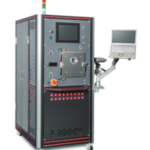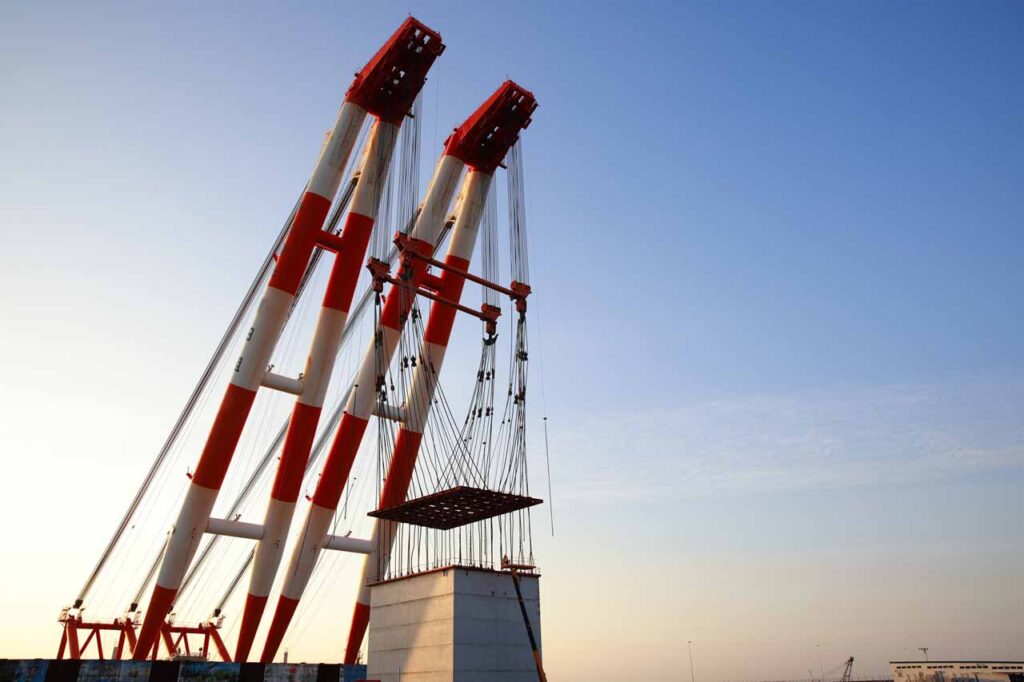
Some vessels are equipped with a winch.
However, it is generally not always clear what they are used for.
In this article, we, SUGA who manufactures winches, explains how winches work, practical situations and how they are used.
The differences with cranes are also explained in the text, and anyone with an interest in ships is encouraged to take a look.
Contents
What is a ship’s cargo handling winch?
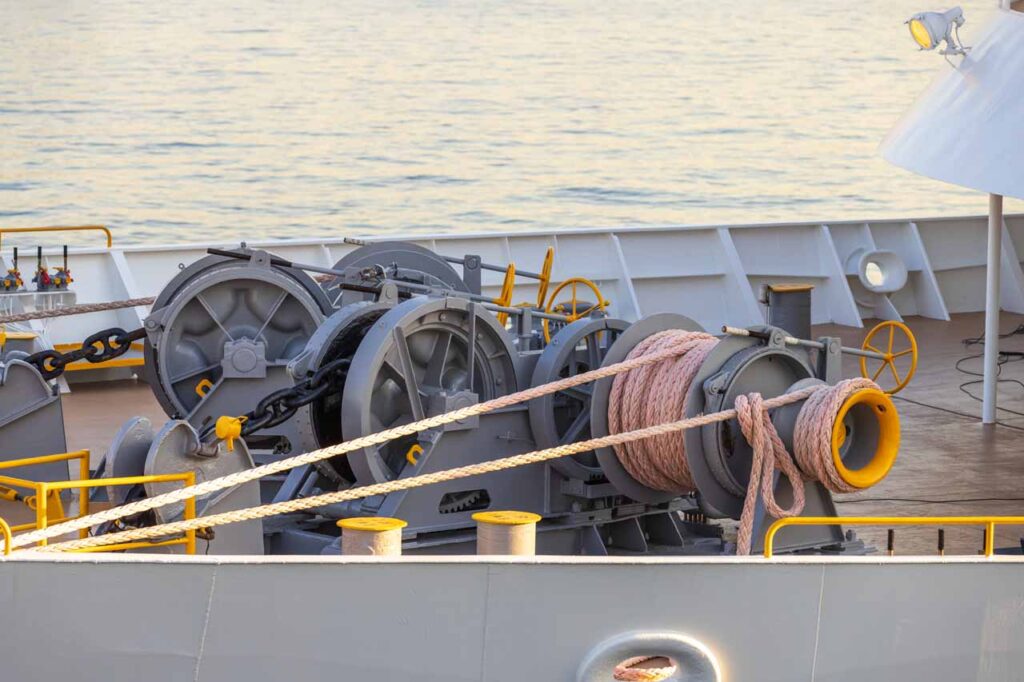
A ship’s winch is a windlass.
It can only move in one direction (up/down, back/forth) and cannot swing left/right.
Also, winches are sometimes used on construction sites and are not equipment exclusively for ships. One of its strengths is that it can lift loads that cannot be lifted by human power.
Vessels equipped with winches are mainly used for the following applications.
A winch can only move up and down, and a crane must be used when side-to-side movement is required. Let’s explain a little about cranes.
Work of crane
Vessels equipped with cranes are mainly used for the following applications
In addition to the vertical movement of the winch, the crane can also move left and right, allowing for more flexible transport. For this reason, cranes are sometimes fitted on larger tanker vessels.
However, most crane barges in Japan are not equipped with a propeller and cannot move by themselves. When moving, those boats are pulled by another boat.
How to use a ship’s winch
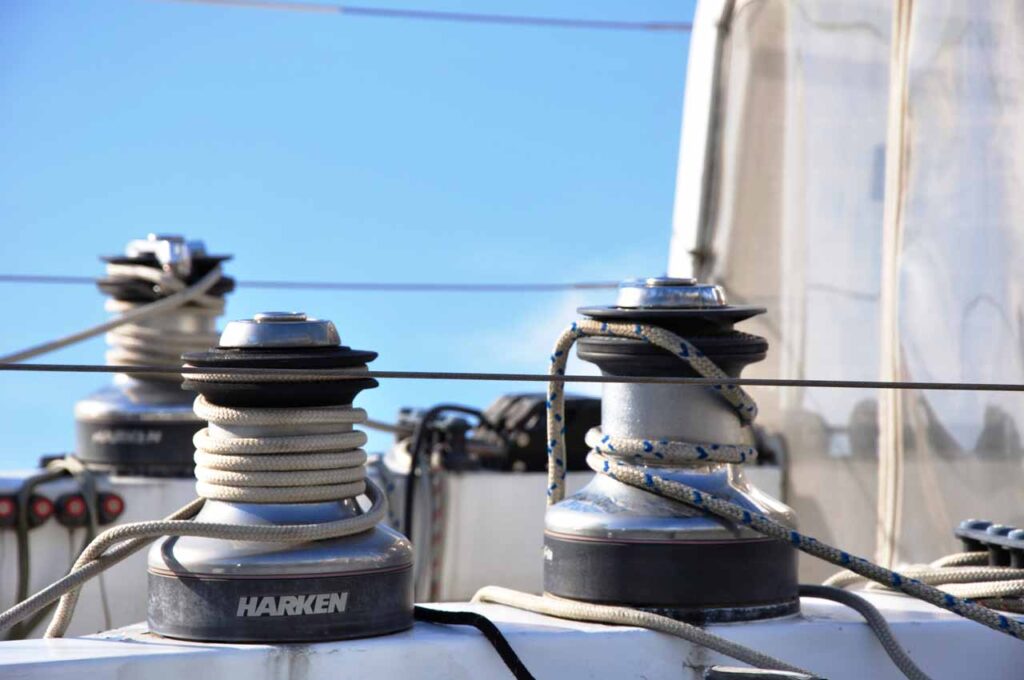
There are two main types of winch on ships.
- Hand winches (manual type) for use on yachts and other small vessels
- Hydraulic monotonic winches for use on large vessels.
Let’s look at each of them.
How to use a hand winch
Hand winches are activated by wrapping a rope around them and pulling.
If the device cannot be pulled by hand, it can still be pulled with more force than human power by using a crank to turn the main unit while pulling.
Some are electrically powered, but they should be very small and can be used on yachts. They are mainly used to retrieve anchors.
How to use a hydraulic monotonic winch
Hydraulic monotonic winches, as the name suggests, are winches that use hydraulic pressure to operate.
Depending on the types, the controls can vary, with larger ones using a clutch and pedal brake on a large scale, while smaller ones can be operated using only a lever at hand.
They are used in a wide variety of fields, from lifting cargo such as containers to pulling nets for fishing, and they support our daily lives in many situations such as trade and fishing.
Winches produced by SUGA.
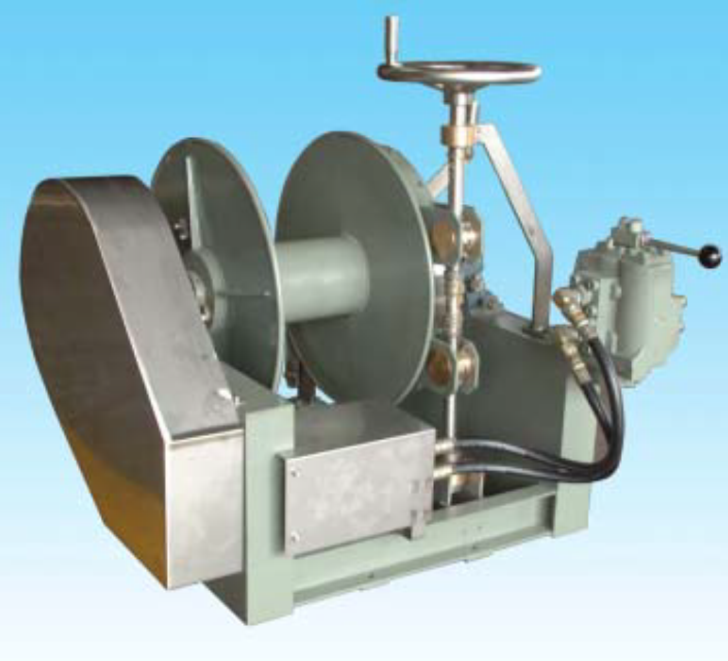
We also produce winches.
This is a relatively small winch, used mainly for net hunting when pulling sea cucumbers and scallops from the seabed.
The use of hydraulics provides sufficient power to improve fishing efficiency. It also focuses on practicality, with stainless steel used for the main parts and processed to resist rusting even at sea.
Detailed specifications are presented in the following pages, which are available for those who are concerned about improving the efficiency of their fishing operations.
See more about SUGA’s winch.Summary
In this article, winches used on ships were explained.
Winch is mainly used for transporting goods, mooring equipment and fishing.
Unlike cranes, they cannot move left or right, so it is important to select one depending on the application and purpose.
We also have a lot more information on ships. ‘How does the ship accelerate and brake?’ ‘ Why do ships float?’ If you are interested in ships, those articles may have answers to your questions.



